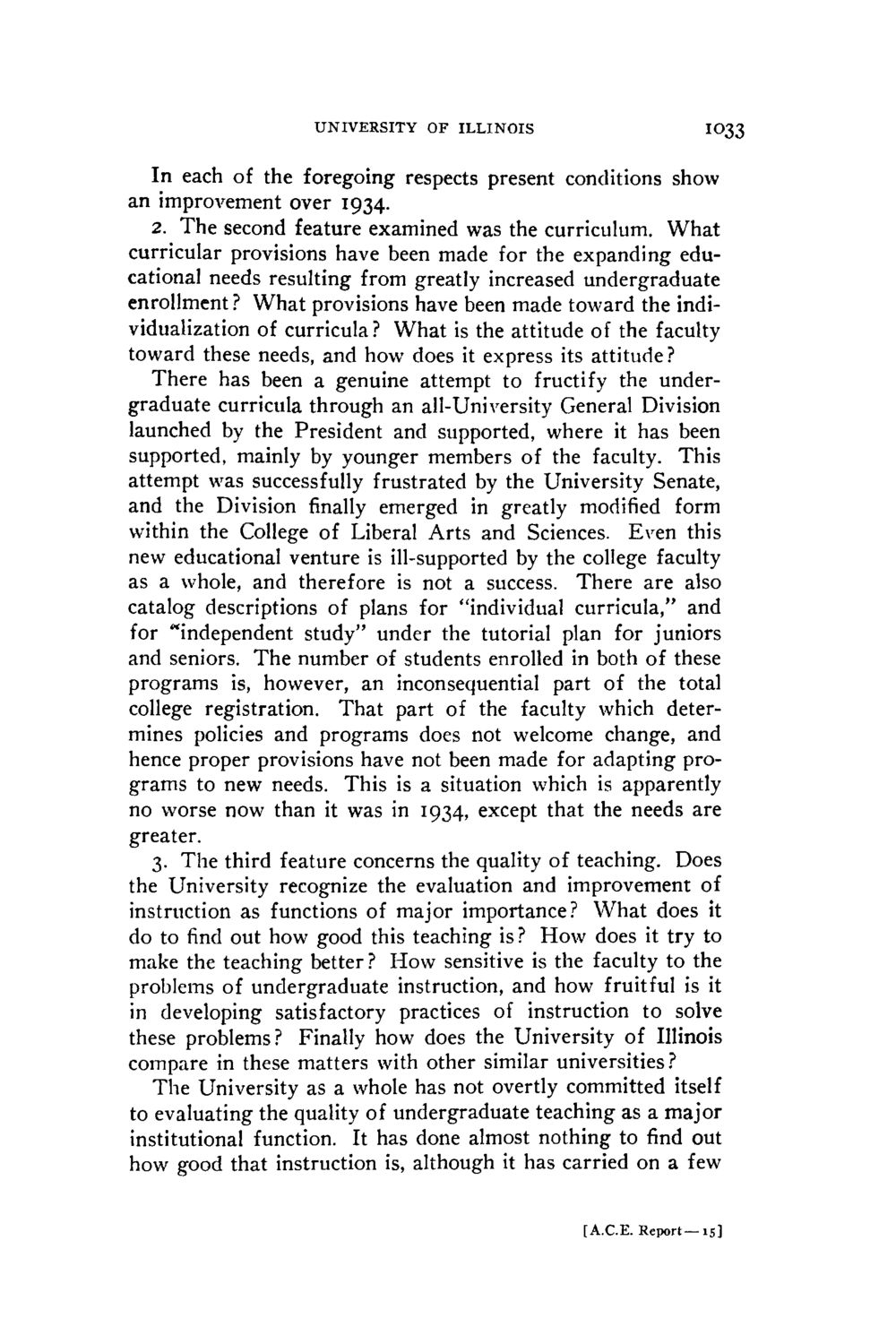| |
| |
Caption: Board of Trustees Minutes - 1944
This is a reduced-resolution page image for fast online browsing.

EXTRACTED TEXT FROM PAGE:
UNIVERSITY OF ILLINOIS I033 In each of the foregoing respects present conditions show an improA'ement over 1934. 2. The second feature examined was the curriculum. What curricular provisions have been made for the expanding educational needs resulting from greatly increased undergraduate enrollment? What provisions have been made toward the individualization of curricula? What is the attitude of the faculty toward these needs, and how does it express its attitude? There has been a genuine attempt to fructify the undergraduate curricula through an all-University General Division launched by the President and supported, where it has been supported, mainly by younger members of the faculty. This attempt was successfully frustrated by the University Senate, and the Division finally emerged in greatly modified form within the College of Liberal Arts and Sciences. Even this new educational venture is ill-supported by the college faculty as a whole, and therefore is not a success. There are also catalog descriptions of plans for "individual curricula," and for "independent study" under the tutorial plan for juniors and seniors. The number of students enrolled in both of these programs is, however, an inconsequential part of the total college registration. That part of the faculty which determines policies and programs does not welcome change, and hence proper provisions have not been made for adapting programs to new needs. This is a situation which is apparently no worse now than it was in 1934, except that the needs are greater. 3. The third feature concerns the quality of teaching. Does the University recognize the evaluation and improvement of instruction as functions of major importance? What does it do to find out how good this teaching is? How does it try to make the teaching better ? How sensitive is the faculty to the problems of undergraduate instruction, and how fruitful is it in developing satisfactory practices of instruction to solve these problems? Finally how does the University of Illinois compare in these matters with other similar universities? The University as a whole has not overtly committed itself to evaluating the quality of undergraduate teaching as a major institutional function. It has done almost nothing to find out how good that instruction is, although it has carried on a few [A.C.E. Report—15]
| |